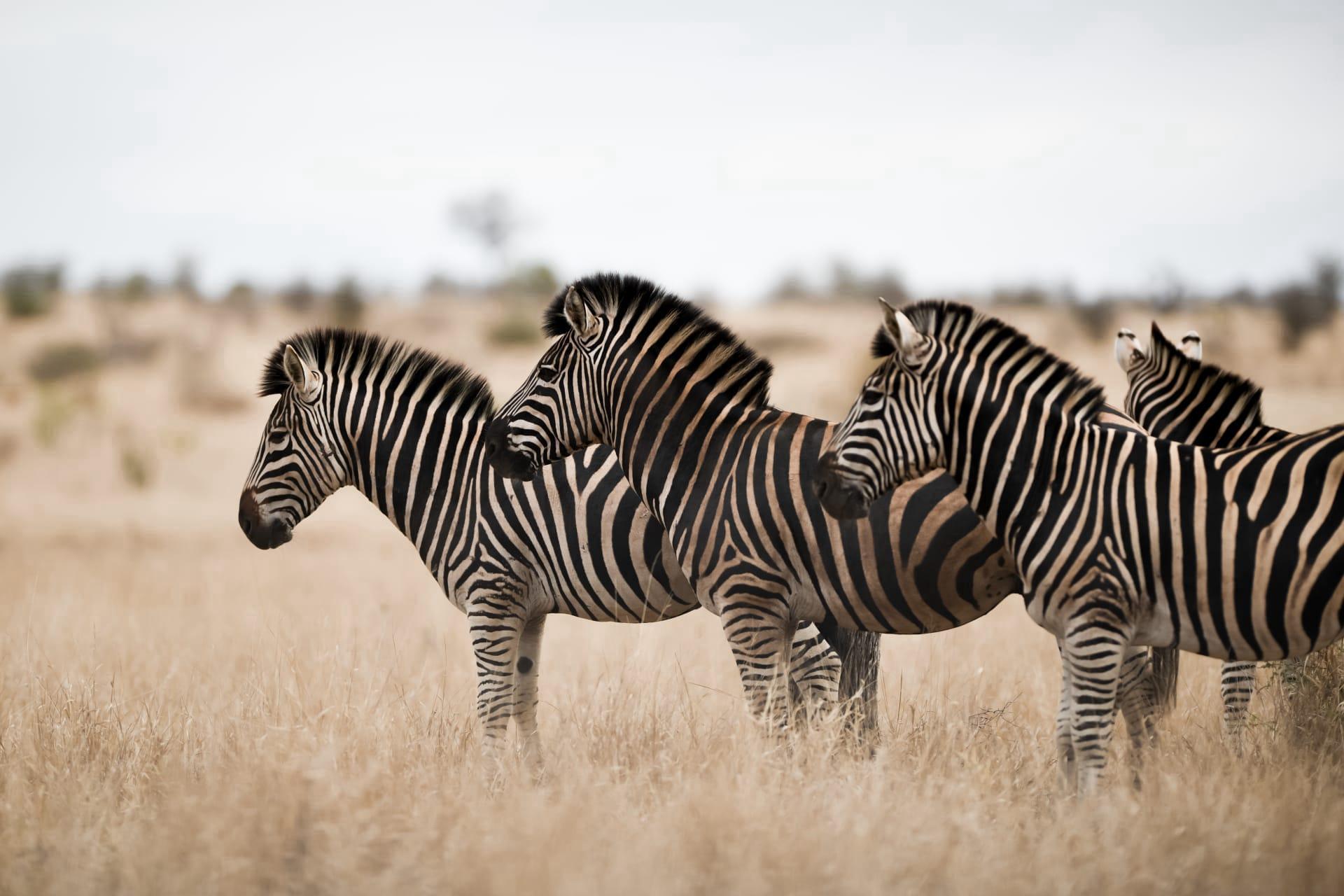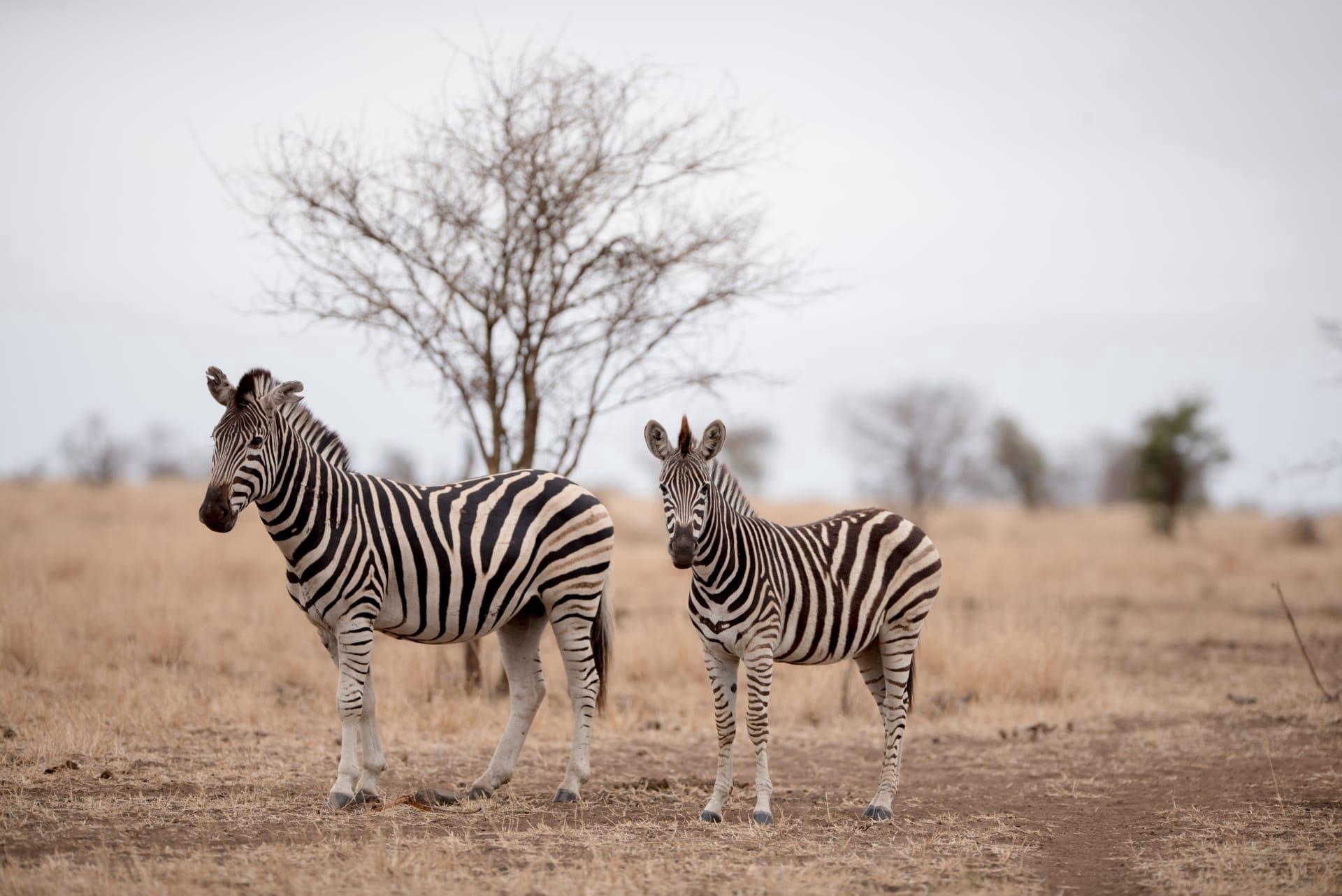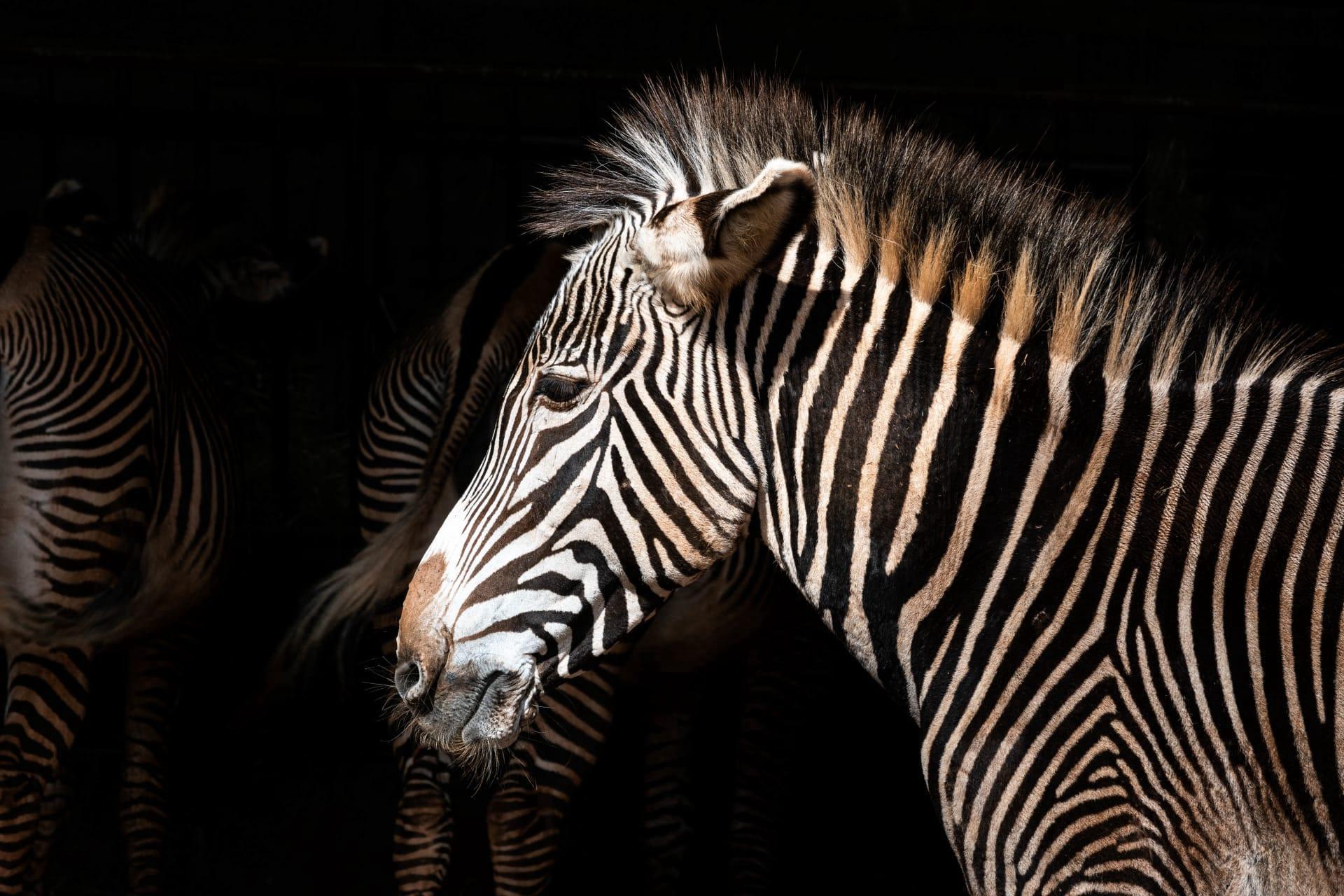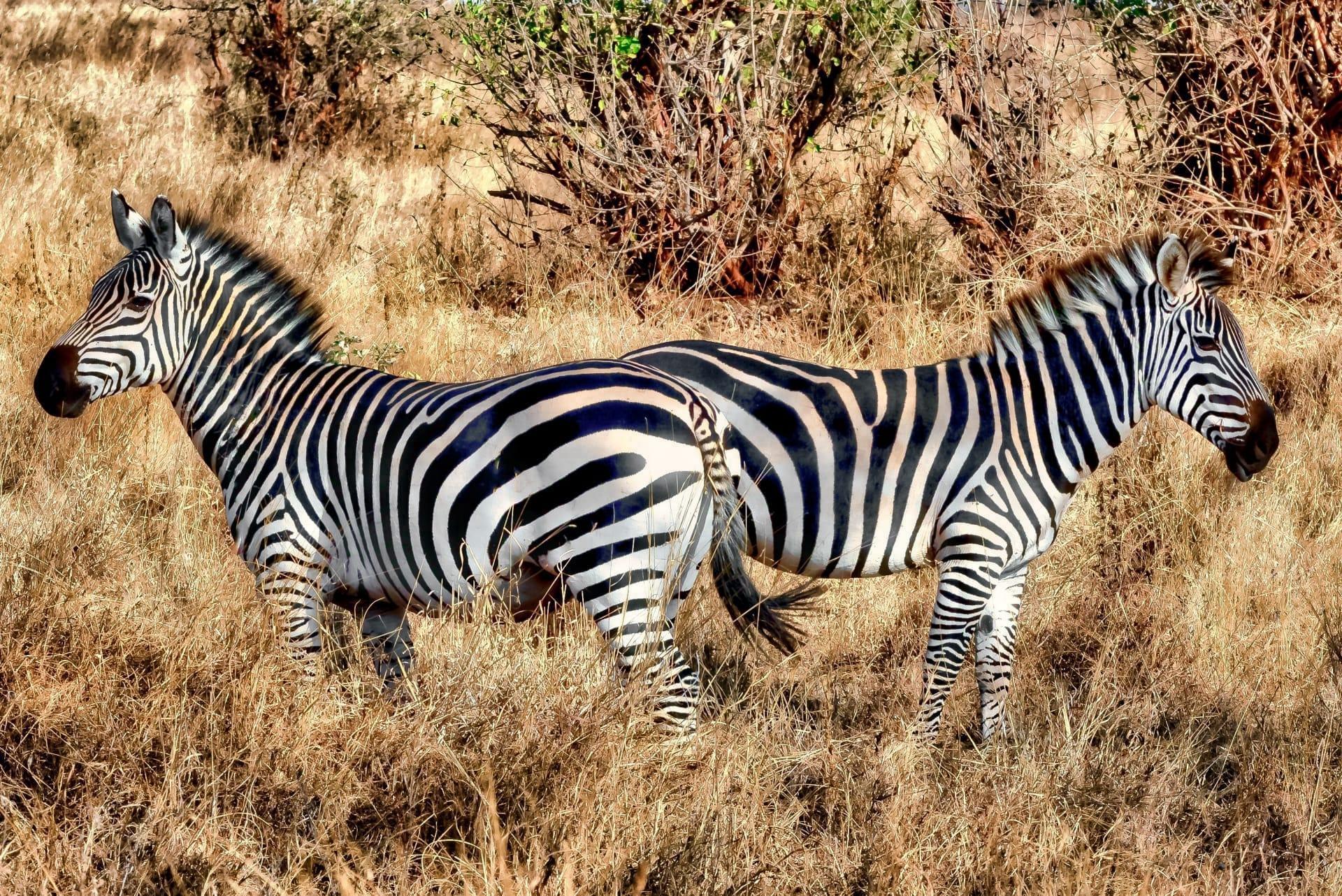Zebra Characteristics
- Home /
- Mini Encyclopedia /
- Animal /
- Zebra Characteristics
1
Zebras, striking with their black and white stripes, are equines native to Africa. They typically stand about 4 to 5 feet at the shoulder and can weigh between 440 to 990 pounds. Lifespan in the wild ranges from 20 to 30 years, influenced by factors like predation and environmental conditions. Each zebra's stripe pattern is unique, like a fingerprint, aiding in individual identification among herd members.
The most distinctive organ of a zebra is its skin, specifically the pattern of its stripes. These stripes are not just for show; they serve several purposes. They help in temperature regulation, the black stripes absorbing heat while the white stripes reflect it. Additionally, these stripes play a role in evading predators by creating a confusing optical illusion when zebras move as a herd, making it difficult for predators to target a single animal.

2
Question: Why do zebras have stripes?
Answer: The stripes of a zebra have fascinated scientists for years. One leading theory suggests that the stripes help deter blood-sucking insects like tsetse flies and horseflies, which are prevalent in the zebra's habitat and can spread diseases. Research indicates that the unique stripe pattern disrupts the visual system of these insects, making it less likely for them to land on a zebra. This evolutionary adaptation plays a crucial role in the zebra's survival in its native environments.

3
Zebras are known for their agility and speed. They can run at speeds of up to 65 kilometers per hour, an essential trait for escaping predators like lions and hyenas. Their movement is characterized by quick, nimble steps, allowing them to swiftly change directions to evade capture.
In terms of diet, zebras are herbivores, primarily grazing on grasses, but they also consume leaves and stems. They have well-adapted digestive systems that efficiently process these fibrous foods, extracting the necessary nutrients. This dietary preference dictates their grazing patterns and plays a role in their migratory behavior in search of fresh pastures.

4
Zebras predominantly inhabit the savannas and grassland plains of eastern and southern Africa. These environments provide ample grazing opportunities and open spaces necessary for their survival. Water availability also influences their habitat selection, as they need to drink regularly.
Regarding reproduction, zebras have a gestation period of about 12 to 13 months. Typically, a single foal is born, which can stand and run within an hour of birth, a critical adaptation for survival against predators. Mares usually give birth during the wet season when food is abundant. Social structures play a significant role in breeding, with stallions maintaining harems of mares.

5
Book: "Zebras: Stripes and Survival" by Samantha Greene. This book, published in the United States in 2015, delves into the fascinating world of zebras. Greene, a renowned wildlife biologist, explores their behavior, survival strategies, and the significance of their unique stripes. The book is enriched with vivid photographs and insights from her field research in Africa.
Book: "The Secret Life of Zebras" by Dr. Paul Martin, published in the UK in 2018. Martin, an expert in African wildlife, offers an in-depth look at the social dynamics and ecological impact of zebras. The book combines scientific research with engaging narratives, providing a comprehensive view of these iconic animals in their natural habitat.